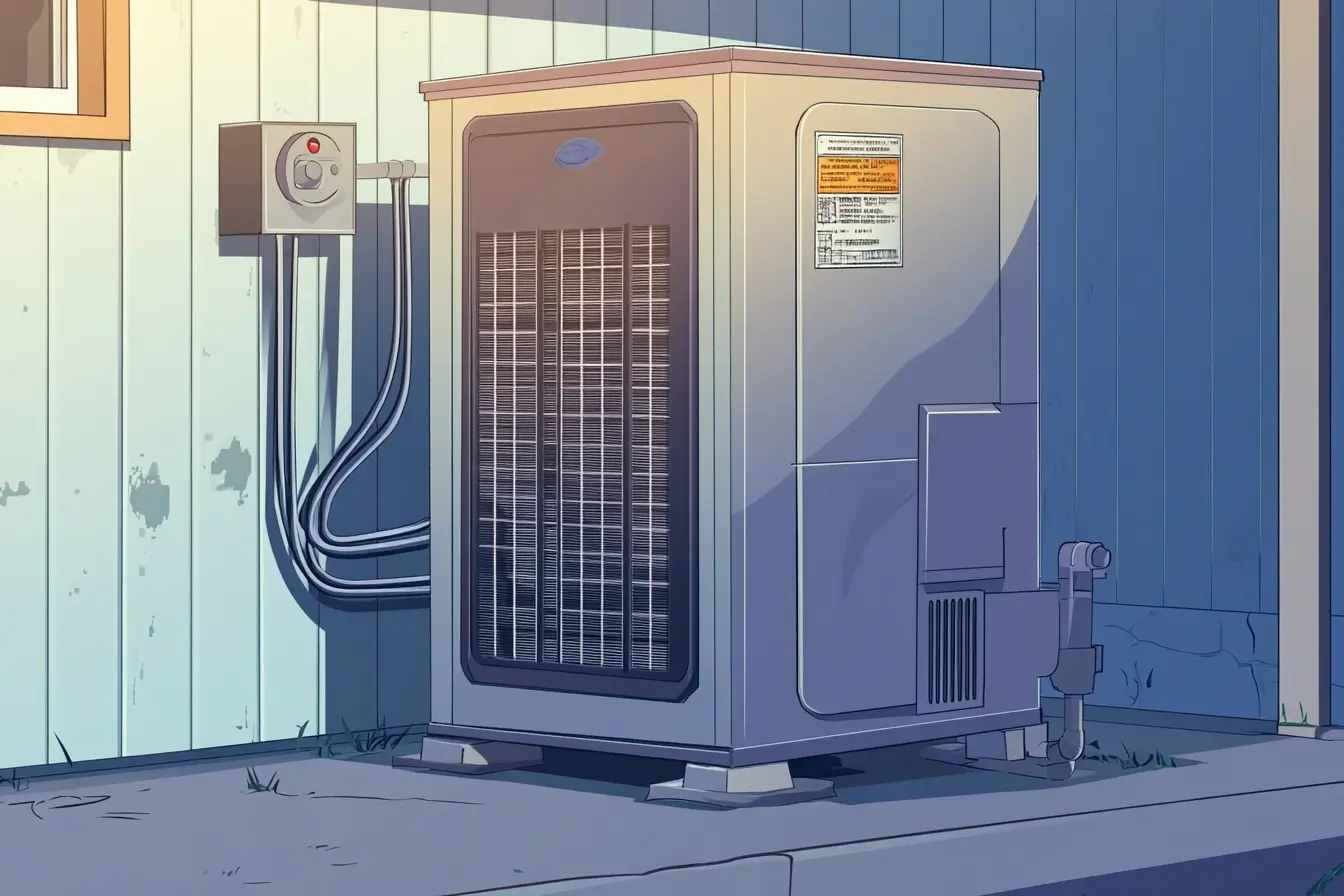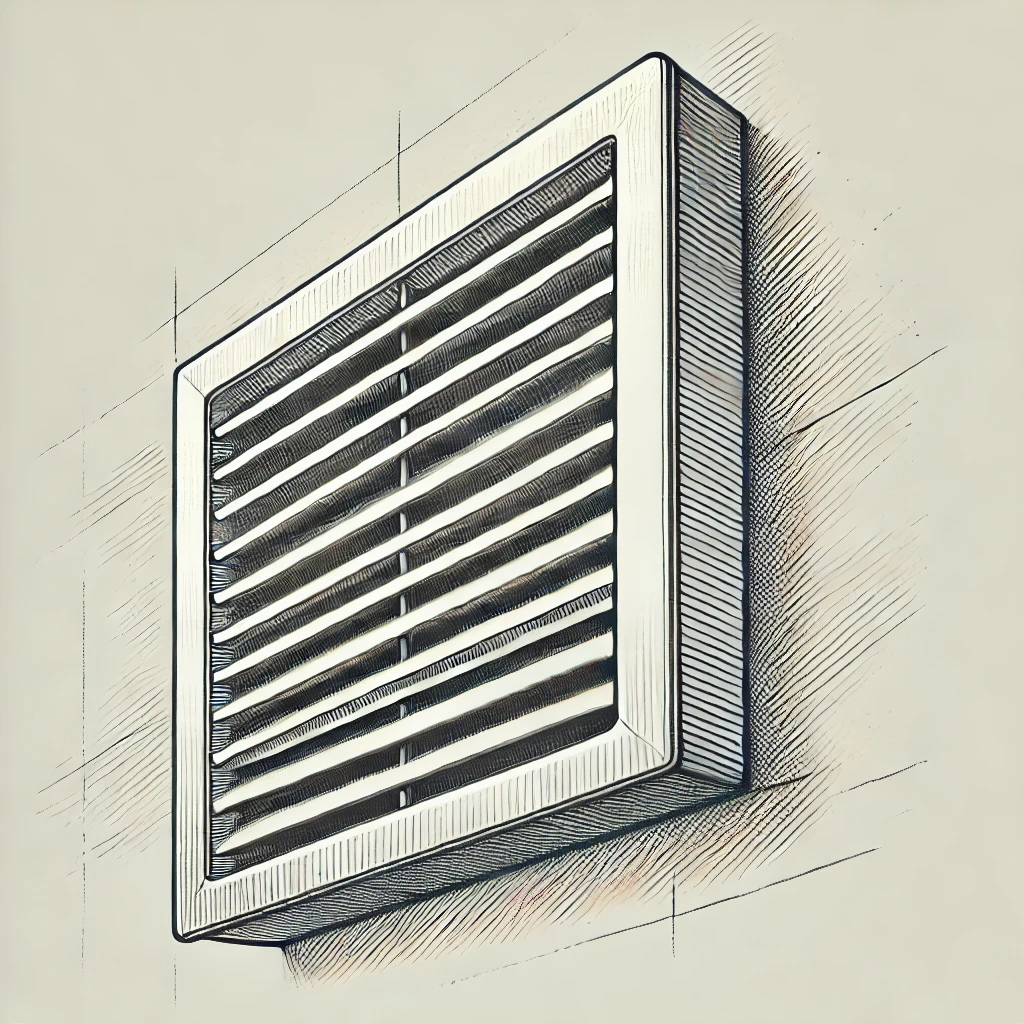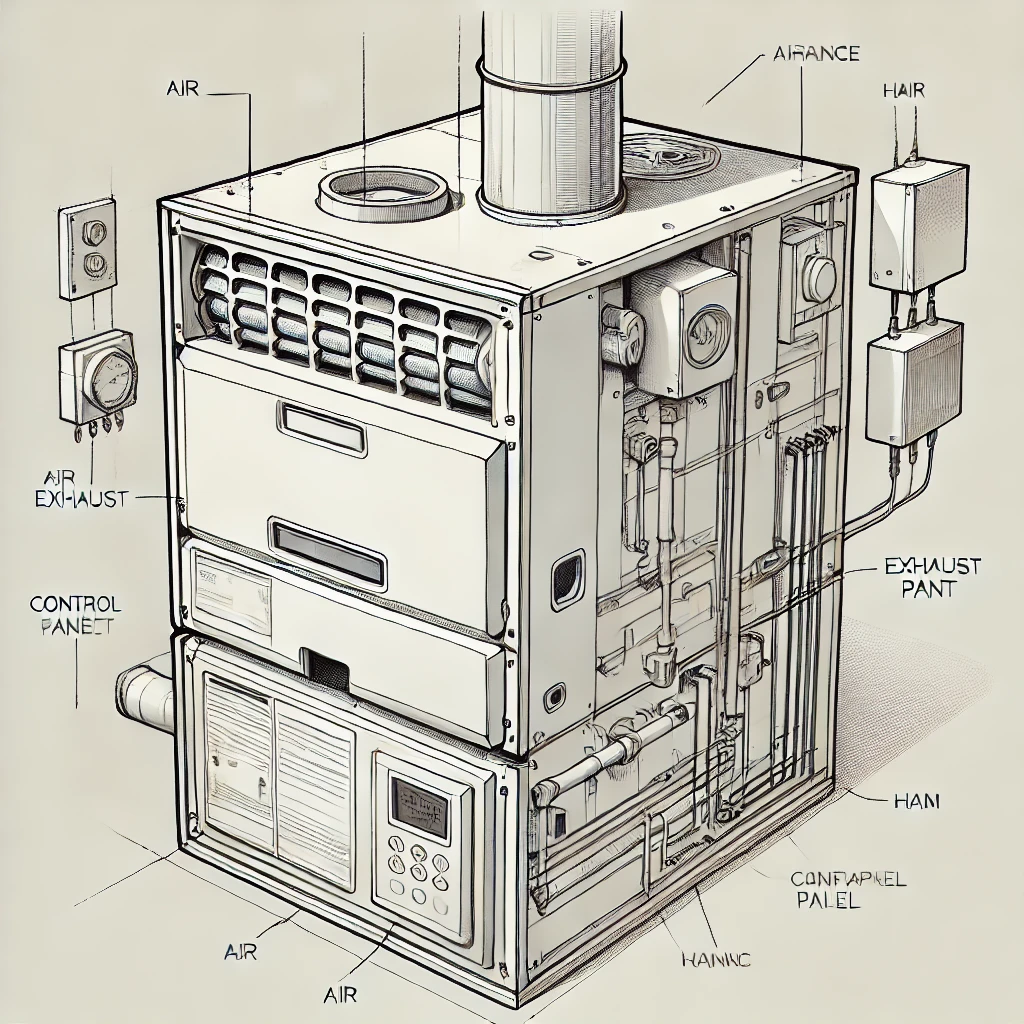Maintaining Your HVAC System

Your home’s HVAC (heating, Ventilation, and air conditioning) system plays a critical role in maintaining a comfortable indoor environment year-round. Proper maintenance of your HVAC system helps extend its lifespan, improves Energy Efficiency, reduces utility costs, and prevents unexpected breakdowns.
This article provides a comprehensive guide to maintaining your HVAC system, including tips for regular inspections, cleaning, and optimizing the performance of key components such as furnaces, air conditioners, filters, and thermostats.
Importance of HVAC Maintenance
Regular maintenance keeps your HVAC system operating efficiently, prevents potential issues, and improves indoor air quality. An HVAC system that is well-maintained can operate at peak efficiency, reduce energy consumption, and help you avoid costly repairs. Additionally, routine upkeep ensures your system can handle seasonal changes in temperature, providing consistent heating and cooling throughout the year.

Changing and Cleaning Air Filters
One of the simplest and most important maintenance tasks is regularly changing or cleaning your HVAC system’s air filters. Dirty or clogged filters reduce airflow, force your system to work harder, and lower its efficiency.
Replace Filters Every 1-3 Months: Depending on the type of Filter and the air quality in your home, filters should be replaced every 1-3 months. Homes with pets or residents with allergies may need more frequent filter changes. If you use a washable filter, clean it thoroughly and allow it to dry before reinserting it into the system.
Choose the Right Filter: Air filters come in different MERV (Minimum Efficiency Reporting Value) ratings, which measure how effectively they trap airborne particles. While higher MERV-rated filters can capture more contaminants, they may also restrict airflow if your system isn’t designed for them. Consult your HVAC manual or a professional to select the right filter for your system.
Monitor Filter Condition: Check your filters regularly, especially during peak heating or cooling seasons. A quick visual inspection will help you determine whether the filter is dirty and needs to be replaced or cleaned.
Cleaning and Inspecting Vents and Ducts
Your home’s vents and Ductwork play a crucial role in distributing conditioned air throughout your living space. Keeping them clean and well-maintained helps improve airflow and indoor air quality.
Vacuum and Dust Vents Regularly: Dust and debris can accumulate in vents, reducing airflow and contributing to poor air quality. Clean your vents regularly using a vacuum with a hose attachment or a soft brush. Be sure to remove any visible dust or debris from registers and grilles.
Inspect Ductwork for Leaks: Over time, ductwork can develop leaks or loose connections, leading to energy loss and inefficient heating or cooling. Inspect your ductwork periodically for visible cracks, holes, or loose joints. If you notice any leaks, seal them with duct Mastic or metal-backed tape to prevent conditioned air from escaping.
Schedule Professional Duct Cleaning: In homes with pets, smokers, or residents with allergies, consider having your ducts professionally cleaned every 3-5 years. Duct cleaning helps remove dust, allergens, and debris that can affect air quality and HVAC performance.
Maintaining the Air Conditioner
Your air conditioner requires regular upkeep to ensure it operates efficiently and provides cool air during the summer months. Neglecting maintenance can lead to decreased performance, higher energy bills, and potential system breakdowns.
Clean the Condenser Unit: The outdoor condenser unit can become clogged with dirt, leaves, and debris, reducing airflow and causing the system to overheat. Clean the unit’s fins and coils at least once a year by turning off the power and using a garden hose to gently rinse away debris. Be careful not to bend the fins, as this can restrict airflow.
Inspect Refrigerant Levels: Low refrigerant levels can cause your air conditioner to lose cooling capacity or freeze up. If you notice a decrease in cooling efficiency, have a professional check the refrigerant levels and inspect for leaks. Never attempt to refill refrigerant yourself, as it requires special handling.
Check the Thermostat Settings: Ensure that your thermostat is set to the correct mode and temperature. Consider upgrading to a programmable or Smart Thermostat to help you optimize energy usage and maintain consistent indoor temperatures.
Check the Condensate Drain: Your air conditioner’s condensate drain allows moisture from the cooling process to drain away from the system. Over time, the drain can become clogged with Algae or debris, leading to water damage and reduced cooling performance. Check the drain periodically and clear any blockages to ensure proper drainage.

Maintaining the Furnace and Heating System
Keeping your furnace and heating components in good condition ensures that your home stays warm and comfortable during the winter months. Regular maintenance helps avoid breakdowns and improves system efficiency.
Clean and Inspect Furnace Burners: Dust and debris can accumulate on furnace burners, affecting the efficiency and safety of the heating system. Inspect and clean the burners regularly to ensure proper ignition and combustion. If the burners appear dirty or clogged, a professional technician can perform a more thorough cleaning.
Check the Pilot Light or Ignition System: If your furnace has a pilot light, make sure it’s burning with a steady blue flame. A yellow or flickering flame may indicate an issue with combustion, such as poor airflow or a gas leak. Modern furnaces use electronic ignition systems, which should also be inspected regularly for proper operation.
Inspect the Heat Exchanger: The heat exchanger is responsible for transferring heat from the furnace to the air circulating in your home. Cracks in the heat exchanger can lead to dangerous carbon monoxide leaks. During your annual furnace inspection, have a technician check the heat exchanger for cracks or corrosion.
Test Carbon Monoxide Detectors: Since heating systems, particularly gas furnaces, can produce carbon monoxide, it’s essential to test your carbon monoxide detectors regularly. Replace the batteries annually and install detectors near bedrooms and living spaces to ensure early detection in case of a leak.
Optimizing Thermostat Settings
Your thermostat is the control center for your HVAC system, and using it efficiently can help reduce energy consumption while maintaining a comfortable home environment.
Use a Programmable Thermostat: Programmable thermostats allow you to set different temperatures for different times of the day, ensuring your system doesn’t run unnecessarily when you’re not home. For example, set the temperature lower at night during the winter and raise it before you wake up.
Consider a Smart Thermostat: Smart thermostats offer advanced features like learning your schedule, remote control via a smartphone app, and energy-saving modes. These thermostats can automatically adjust the temperature based on occupancy, saving energy while maintaining comfort.
Adjust Settings Seasonally: In the winter, set your thermostat to around 68°F while you’re home and lower it when you’re sleeping or away. In the summer, aim for 78°F when you’re home and higher when you’re out. Small adjustments can lead to significant energy savings over time.
Scheduling Annual HVAC Inspections
While you can handle many HVAC maintenance tasks yourself, scheduling a professional inspection annually is essential for ensuring that your system operates safely and efficiently.
Schedule Fall and Spring Tune-Ups: HVAC professionals recommend scheduling tune-ups twice a year—once in the fall before heating season and once in the spring before cooling season. During a tune-up, a technician will clean, inspect, and test key components of your system to ensure everything is functioning correctly.
Inspect Electrical Components: Your HVAC system’s electrical components, including wiring, capacitors, and relays, should be inspected regularly for signs of wear or damage. A technician will check these components during your annual inspection to prevent electrical failures or safety hazards.
Calibrate the Thermostat: Over time, your thermostat may become miscalibrated, leading to inaccurate temperature readings and inefficient heating or cooling. A technician can recalibrate your thermostat to ensure it maintains the desired temperature accurately.
Signs Your HVAC System Needs Attention
Recognizing early signs of HVAC problems can help you address issues before they become major repairs. Here are some warning signs that your system may need professional attention:
Unusual Noises: Banging, rattling, or screeching noises from your HVAC system can indicate loose or damaged components. These noises should be inspected by a technician to prevent further damage.
Inconsistent Temperatures: If certain areas of your home feel colder or warmer than others, it may indicate an issue with your HVAC system’s airflow, ductwork, or thermostat.
Increased Energy Bills: A sudden spike in your energy bills without a corresponding increase in usage can signal that your HVAC system is working harder than necessary. Dirty filters, low refrigerant levels, or worn components may be to blame.
Frequent Cycling: If your HVAC system turns on and off frequently, it may be short cycling due to an issue with the thermostat, airflow, or system size. This can put unnecessary strain on the system and reduce its lifespan.
Additional Resources
For more information on HVAC maintenance and energy-saving tips, visit:
U.S. Department of Energy (DOE): The DOE offers resources on heating and cooling efficiency, including tips for maintaining HVAC systems. Visit DOE Energy Saver for more information.
ENERGY STAR: ENERGY STAR provides guidance on energy-efficient HVAC systems and tips for reducing energy consumption. Visit ENERGY STAR HVAC Maintenance for recommendations on improving HVAC performance.
Wrap-Up
Maintaining your HVAC system is essential for ensuring it runs efficiently, providing year-round comfort while keeping your energy bills in check. By regularly changing air filters, cleaning vents, inspecting key components, and scheduling professional tune-ups, you can extend the lifespan of your HVAC system and prevent costly repairs.
Proper maintenance not only improves system performance but also enhances indoor health and living for the whole family.